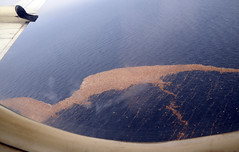What might happen if a nearshore tsunami caused by a local earthquake were to travel from the Oregon coast up the Columbia River? That was the focus of a recent research workshop funded by Oregon Sea Grant at Oregon State University (OSU), August 15-16.
“We know tsunamis can penetrate along rivers for long distances,” said OSU tsunami expert Harry Yeh, the workshop organizer. But, said Yeh, tsunami penetration up rivers has been largely unexplored until now.
“In the coastal plain they [tsunamis] can penetrate 2 to 5 kilometers [about 1 to 3 miles], but with the river they can penetrate up to 10 kilometers [about 6 miles] no problem.”
The Oregon Coast lies along the Cascadia subduction zone, a fault line that stretches from Northern California to British Columbia. The Cascadia subduction zone is similar to the subduction zone that caused Japan’s recent earthquake and tsunami. A magnitude 9.0 earthquake occurs along the Cascadia subduction zone once every 300-500 years. It had its most recent earthquake in 1700. This expected earthquake would most likely be accompanied by a tsunami, which could affect the Columbia River, said Yeh.
The 18 workshop attendees were asked by Yeh to model a section of the Columbia that stretches from Astoria, Oregon at the coast all the way to the Bonneville Dam. Yeh said the idea was to gather general data that could be used in future tsunami modeling.
“We are not trying to do detailed models of say Astoria or Longview, for instance,” said Yeh. “Though, I think that’s next step.”
Many of Oregon’s coastal communities could one day feel the affects of a tsunami. Communities that could be flooded or inundated by tsunamis have been mapped by the Oregon Department of Geology and Mineral Industries into inundation zones. But these inundation maps don’t include the Columbia, said Yeh. Instead the maps stop at Astoria, which lies at the mouth of the Columbia. The workshop’s exploration of what might happen if a Tsunami penetrated the Columbia could change how tsunami inundation maps are made in the future, said Yeh.
“This work is very theoretical, very academic, but it has direct consequences and real applications, which is why I feel like this is important work,” said Yeh.
Events at the recent workshop included presentations by Yinglong Joseph Zhang of Oregon Health and Science University on how far a tsunami could penetrate the Columbia, as well as a presentation by David Jay of Portland State University, on the hydrodynamics of the river. Workshop discussions also included comparing different tsunami modeling techniques including those used by the National Oceanic and Atmospheric Administration (NOAA) and those used by the Japanese government.
Of particular interest to Yeh himself is a stretch of the Columbia that starts at Astoria and follows the Columbia until it turns south toward Portland at Longview, Oregon. Yeh says the bathmetry, or depth of the water in this area is very complex and includes marshes, and islands and other complex topography, which makes modeling complex. The islands, marshes, and other elements of the river’s landscape will play into what is known as the friction effect, which Yeh lead a discussion on during the workshop.
Yeh’s workshop also examined the affect the movement of the tide could have on a tsunami traveling from the Pacific Ocean to the Columbia River. Whether the tide is coming in or out could be very important, said Yeh.
Of particular interest to researchers at the workshop was whether a tsunami could reach Portland, Oregon.
“Even in the Portland area residents could feel the affects of a tsunami,” said Yeh. “Although this affect is going to be very small, it is going to be measurable.”
Yeh recently returned from Japan where he witnessed the results of the earthquake and tsunami that devastated the country, including how the recent tsunami traveled up the Kitakami River.
Yeh, who started studying tsunamis in 1985, saw the results of a tsunami first hand in 1992 after a large tsunami hit Nicaragua. His past research has included Oregon Sea Grant funded work with fellow OSU Professor Daniel Cox. In 2009, Cox created a model of the coastal Oregon city of Seaside that he, with the help of Yeh, then inundated with a simulated tsunami using the university’s O.H Hinsdale Wave Research Laboratory, a facility that contains a wave machine capable of creating scaled facsimiles of tsunamis. The model town received a scaled-down version of a tsunami that could hit Seaside if the Cascadia subduction zone experiences a 9.0 magnitude earthquake.
Yeh said the workshop went well and has resulted in a further collaboration between himself and several workshop attendees.




